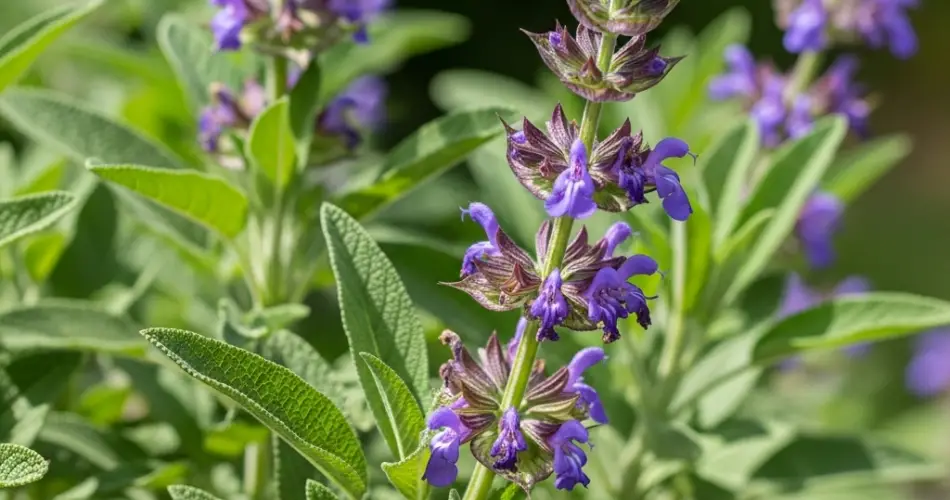Sage (Salvia officinalis) is a hardy perennial herb beloved for its aromatic leaves and culinary versatility. While it’s generally low-maintenance, even the toughest sage plants can struggle under the wrong conditions. If your sage plant looks wilted, discolored, leggy, or dry, don’t worry—it’s often possible to revive it with a few thoughtful steps. Here’s how to bring a struggling sage plant back to health and encourage it to thrive once again.
Step 1: Identify the Problem
Before you attempt to revive your sage, take time to figure out what’s causing the issue. Here are some of the most common reasons sage plants decline:
-
Overwatering or poor drainage: Sage prefers well-draining soil and does not like “wet feet.” Root rot can develop if the roots sit in water.
-
Underwatering: Though drought-tolerant, sage still needs consistent moisture, especially during hot weather.
-
Lack of sunlight: Sage needs full sun—at least 6–8 hours of direct light daily—to grow vigorously.
-
Nutrient depletion: Old or poor soil can result in nutrient deficiencies, causing yellowing leaves or stunted growth.
-
Pest infestation: Aphids, spider mites, or fungal infections can damage the plant.
-
Overcrowding: Lack of airflow around the plant can lead to disease or poor development.
Look closely at the plant’s leaves, stems, soil, and growing environment to determine which issue might be affecting it.
Step 2: Check the Soil and Watering Routine
Sage is native to the Mediterranean and thrives in dry, sandy, well-draining soil.
-
Feel the soil: If it’s soggy, you’re likely overwatering or the drainage is inadequate. Repot or amend the soil with sand or perlite to improve drainage.
-
Adjust watering: Allow the top inch of soil to dry out before watering again. In containers, make sure the pot has drainage holes.
-
If too dry: Water deeply but avoid letting the plant sit in water. Sage prefers deep, infrequent watering over shallow, frequent doses.
Step 3: Inspect the Roots
If your sage looks severely wilted or hasn’t improved after correcting watering, it may be necessary to check the roots.
-
Gently remove the plant from its pot or loosen the soil around the base.
-
Healthy roots should be white or tan and firm. Black, mushy, or foul-smelling roots indicate rot.
-
Trim off rotting roots with clean scissors, then replant in fresh, dry soil.
Allow the plant a few days to recover in indirect light before returning it to full sun.
Step 4: Prune Back Damaged Growth
Pruning helps redirect energy into healthy growth and improves airflow.
-
Use sterilized scissors or pruning shears to remove any brown, dry, or wilted leaves.
-
Cut back leggy stems by about one-third. This encourages bushier, more compact growth.
-
If the plant is mostly dead but has a few green sections, cut back to where the stems are still alive. Sage is resilient and often bounces back from a hard prune.
Avoid cutting into old, woody stems unless you see new buds forming, as these don’t always regrow easily.
Step 5: Provide Proper Light
Sage needs full sun for most of the day to grow vigorously.
-
If you’re growing indoors, place the plant in a south-facing window or under a grow light.
-
Outdoors, choose a sunny spot with at least 6 hours of direct sunlight.
-
In low-light conditions, sage may grow leggy and weak, reducing its flavor and aroma.
Step 6: Refresh the Soil (If Needed)
Sage doesn’t require rich soil, but after a few years, the soil can become depleted.
-
Mix in compost or aged organic matter to add nutrients.
-
Avoid overfeeding. Too much nitrogen can lead to excessive leafy growth and reduced flavor.
-
If growing in a pot, consider repotting with fresh, well-draining herb mix every 1–2 years.
Step 7: Watch for Pests and Diseases
Even a weakened sage plant can recover with care, but pests can make things worse.
-
Check leaves and stems for aphids, spider mites, or powdery mildew.
-
Wash off pests with a gentle spray of water or use neem oil as a natural remedy.
-
Improve airflow by spacing plants apart and trimming excess foliage.
Step 8: Be Patient and Consistent
It may take a few weeks for your sage to bounce back fully. During this time:
-
Keep the plant warm but protected from extreme heat or frost.
-
Maintain a steady watering routine.
-
Monitor new growth—healthy, green shoots are a good sign that recovery is underway.
Final Thoughts
Reviving a dying sage plant is often a matter of correcting its growing conditions and being patient. Sage is a hardy herb, and with the right care—good drainage, ample sunlight, occasional pruning, and a bit of attention—you can nurse it back to health and enjoy its fragrant leaves for seasons to come. Even if parts of the plant seem beyond saving, don’t give up too quickly. Sage is surprisingly resilient and can make a full comeback with just a little help.



